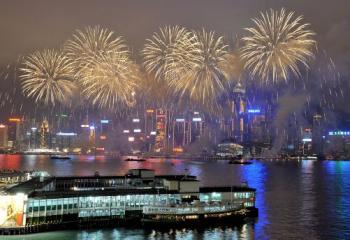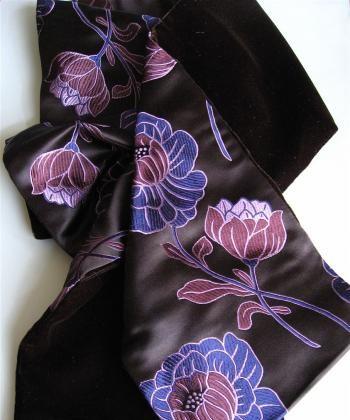Clothing had great significance in people’s way of living in China at that time, especially among the well-educated, and was viewed as a work of art.
Han costumes held deep meaning behind their delicate outer appearance. In Chinese traditional culture, many believed in Buddhism and Taoism and the idea of a connection between body, mind and soul.
Han Couture corresponded with religion and spirituality, based on the principle of “being one with heaven and man.” What is reflected in the clothing is what the saying implies—respect and faith in the divine.
The Chinese depicted their beliefs by using different materials, colors, and designs on the clothing, and natural elements were harmoniously incorporated into the costumes.
The NTDTV Global Han Couture Design Competition, which took place at Manhattan’s Prince George Ballroom recently, displayed the beauty and richness of the clothing worn in ancient times in China.
“There is an old saying, ‘a gentleman won’t take off the jade from his clothes unless there are some reasons’,” said Fan Hong, the lead judge in the competition.
“In ancient China, people wore jade at their waist; males would wear it with a sword. It was not for showing off. Jade represents five moral connotations. As a human being, a person should have five virtues: benevolence, righteousness, courtesy, wisdom and belief.”
Han Couture was designed to make the wearer appear dignified yet relaxed. The sleeves of the womens’ dresses were a foot wide and covered the hands, ranging in color from stain purple to blues, reds, and yellows.
Han Couture reached its finest era from the Tang dynasty to the final period of the Ming Dynasty, lasting for more than 1,000 years. The Tang dynasty was very prosperous, and expensive materials such as silks were used widely, displaying rich colors and patterns.
Symbols of nature were often printed onto the clothing, such as the fenghuang, or the phoenix. The fenghuang is known to bring good luck and carries the quality of birth and death. It also symbolizes heavenly power, the cycle of rebirth, and the virtues of honesty and loyalty.
While the fashion of the Song dynasty was elegant and formal, it was universal in that everyone from government officials to the common people could wear it. The hairstyles were dressy—women had braided hair and wore bands that had pictures of the phoenix.
Styles worn during the Ming dynasty were more ceremonial and consisted of many pleated designs and satin patterns. The phoenix was popular again during this era, and flowers were imprinted on many of the fabrics.
Another feature of the Ming dynasty was the cape, which was called “the pink cloud shape” because of its perfect shape.
Although fashion evolved with each dynasty, it firmly held the principles of the ancient beliefs. The history of Han Couture provides insight into the ways of thinking and the deeper meaning of human life as believed by the people of China’s ancient times.



Friends Read Free